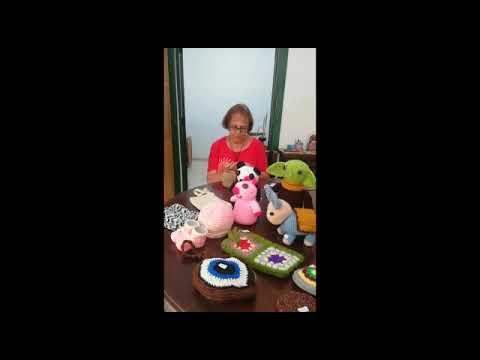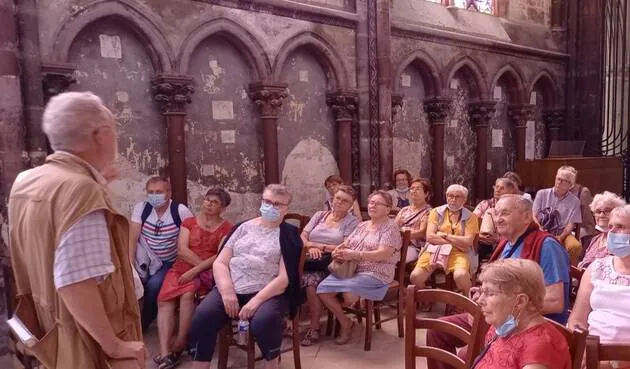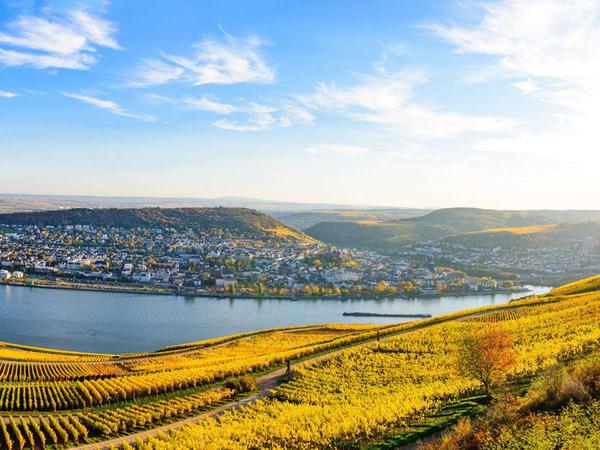Crafts in Lanzarote: The history of many, the future of few |Diario de Lanzarote
Haría es el valle de las diez mil palmeras, la última morada de César Manrique, el mercado tradicional de los sábados y también la cuna de la artesanía, como ha titulado Echedey Sánchez su primer libro, dedicado a una constelación de prácticas tradicionales que están en riesgo de desaparecer y cuyos últimos estandartes se siguen reuniendo y trabajando en el taller municipal Reinaldo Dorta.
For Sánchez, the municipality of Haría "is characterized by a series of customs, parties and traditions that are the reflection of the situations that have passed"."His illustrious characters, their varied architecture, such as the bunker or Juanita Casa, in Arrieta, their archaeological sites, such as Bravo's cheese, and its rich and varied crafts," they give their own uniqueness, it stands out.
In Haría, cradle of the crafts of Lanzarote, the author perfectly describes the work of many artisans and artisans who, unfortunately, is being lost ".The book documents between 2013 and 2019 the work of artisans, any of which has already died.This is the case of Nélida Martín, pioneer of the palm doll.His daughter, Sandra López, is "very interesting" and "a pride" that took his mother into account.María Dorta dedicated himself to the reed basketry and also appears in the volume."Seeing us all gathered in that book is very nice," he emphasizes.
The Reinaldo Dorta Municipal Workshop, founded in 1989, is the last oasis for crafts."In 2014," recalls Echedey Sánchez, "17 artisans worked more than one trade".Only the following year achieved a special mention in the distinguished awards of tourism, granted by the Cabildo.Today, artisans and artisans who have the possibility of having a hole in this workshop strive to keep the legacy alive in a space where they can be seen working on their works.
Echedey Sánchez emphasizes that crafts can become an element that stimulates another type of tourism: it fits with Hararía's singularities, which could become a unique enclave for visitors.Artisanal tourism, explains Sanchez, consists of visits to fairs, markets and exhibitions.Those who practice it "are consumers of popular wisdom, of traditions and customs", and appreciate "the cultural value of the people", emphasizes.
"Behind an artisanal object there is an extraction of matter, the treatment of this raw material to transform it through an elaboration process, which has a value," he says.If it is given the importance it deserves, crafts could be a dynamic element for Hararía, one of the pending subjects of the island and municipal authorities.
Miguel Clavijo is dedicated to pottery.Performs all kinds of lozas, containers or miniatures with a traditional, native and also contemporary artisanal style.Miguel is at the foot of the canyon from early in the morning.Account that has not been free for a long time.Prepare these pieces takes many hours and days of work: first you must look for mud - or clay - and select it, "since not everything is suitable"."It is extracted from the subsoil and the impurities are removed," he explains.Something similar happens with the colors with which the bacinillas paints, for example."The colors are prepared, mix with water and, what is not sneaks into, is what it serves," he details.
Miguel's work is laborious, demands many hours and profitability is scarce."If I work for about six hours a day, six days a week, I make about eight pieces," he says.A piece can be sold at 30 euros.“How much do I take?What am I going to live when I get old? ”."View from the outside the crafts is very pretty but what will happen in nine or ten years, when all these artisans are not?" Asks Miguel.

The lack of generational relief is one of the main problems of crafts and, in fact, much of the artisans predict their disappearance."Years ago, who did not cost Balayos or elaborated rosettes, for example," says María del Carmen Lorenzo, a professor of cutting and clothing since the age of 14.
However, it specializes in Almazuela or what is known as Patchwork, in English.Pachtwork comes from Amish, a Protestant group, mainly known for their simple and traditional lifestyle, and its resistance to adopting modern comforts and technologies."Handicraft is not paid," concludes María del Carmen, who emphasizes that it is strange to see someone who dedicates themselves to these tasks and their knowledge goes from generation to generation.
María de los Ángeles Perdomo can say that her lineage will continue.This crochet and macramé craft.At present, his daughter Lorena Reyes continues with the legacy, with a fashion firm made of macramé.
Óscar Fernando González and his wife Rosa Adela Betancor form Mayeh artisans, dedicated to leather goods since 2000.Despite the difficulties, Oscar is optimistic.He acknowledges that "crafts, in general, is not valued," and adds that "it is not appreciated"."Much of what is seen now is creative crafts and it is not craft as such," he says, but also considers that this discipline "is suffering an evolution" and that "it will not be lost"."Maybe in 50 years there will be other types of materials or techniques," he predicts.
Mario Franceschin Cattaruzza is a goldsmith.This Venezuelan has been in Lanzarote for 32 years."I began to dedicate to this because it allowed me to travel and work".He started when he was 24 years old and moves forward to his well taken 67 years.When asked if you live well with this work, return the currency: "Do you live well as a journalist?"."I am not, but I have my basic needs covered.The passion moves me more ”, sentence.Mario slides
a certain pessimism about the future of the world to which he has dedicated four decades.“Will crafts continue?I don `t believe.My son left her studies and endured two months here, ”he says.This goldsmith has a contemporary style and highlights its creative expressionism, and manufactures jewels designed and elaborated by himself.
What is crafts
@dixonij I'M Using That Money To Learn How To Make Whiskey, Dammit
— Mike, Good Brother Wed Jul 21 05:27:33 +0000 2021
Echedey Sánchez clarifies the need to specify the difference between what is crafts, art and craft, to make clear, also what is not crafts."Painting for example, is not crafts," he says.Art, such as creating a sculpture, is linked to "unique pieces" and its usual market is usually that of people with high purchasing power.
In crafts, on the other hand, objects that are almost identical to each other are usually reproduced, and the sale price is lower.In the craft it is customary to use reusable material and, to creativity, the purpose of entertainment is added."If a craft becomes systematically, it would become crafts, the mode of artisanal recycled," specifies.
When Haría finished, cradle of Lanzarote craft.The precariousness of the sector is a habitual conclusion and the expert emphasizes that "politicians have a pending subject with crafts".For a craftsman, becoming a freelancer, without stability, is "complicated".
"Handicraft should be subsidized to a large extent", because the taxes that professionals "are excessive" must face and take the possibility of living from activities that are in danger of getting lost."A craftsman is not the same, which takes several days to make a hand -piece, than a mechanized company," says Miguel Clavijo."However," he emphasizes, "we pay the same".
Regarding the incorporation of young people to this world, in the cultural field there are many factors that slow the relay: from the little attraction for the young population, to the lack of professional valuation, through the low presence of training offer.Echedey also highlights the importance of assessing the work of artisans and not haggling with their work, "poorly paid" and with little recognition.
With this report, Diario de Lanzarote wanted to highlight the arduous work of artisans and artisans who work in the municipality of Haría.A sacrificed- and at the same time wonderful- work that Echedey Sánchez's book seeks to value and amplify his knowledge.
Profiles
María de los Ángeles Perdomo.Artisan of the macramé.The lineage of crafts continues with his daughter: “You are following my steps.Now he has his own brand and performs his macrame designs, ”says María de los Ángeles Perdomo.Mother and daughter share a position every Saturday in the artisanal market of Haría.Noren, the brand of its parent, combines the artisan technique of the macramé with fashion, in some custom and unique designs.
Immaculate Fernández González."I started decoration with 49 years," says this weaver.Nine years later and with two cycles at the Pancho Lasso School of Art, he specialized high and under Lizo de Tejeduría.Make traditional backpacks, carpets, bedrooms, tablecloths and fajines, among other products.The threads with which they are weaved are left -handed cloths or trapillos.The loom it has is a masterpiece, originally from the house of the merchant Manuel Arencibia.
Óscar Fernando González.He is a sorchinery specialist for "the sense of need".Óscar Fernando and his wife, Rosa Adela, have evolved based on what the clientele demanded."We were taking away what people didn't ask us," he says.Hence its specialization in leather goods.They work with leather of animal origin, but cruelty free evolution and brands are causing them to work with rubber, cactus or cork.
María del Carmen Lorenzo Rodríguez.Artisan of the Almazuela and Polifacetic."My mother, in summer, did not let us be for three months without doing anything and pointed to all kinds of courses," he says."This quilt is doing is for my great -grandson.I do not sell it, but, if I had to sell it, it would be for no less than 500 euros ”.This cutting and clothing teacher has taken more than two months to prepare this piece, composed of 152 triangles.
Miguel Clavijo Robayna.It is potter and continues the dynasty of ceramics.His teacher, the renowned Aquilino Rodríguez Santana, gave him some stones to continue the tradition, stones that belonged to Francisco Rodríguez ‘Panchito’, Domingo Díaz and Aquilino himself.Formerly, it was a unique and exclusive trade of women."These men broke the molds," explains Miguel, proud of his trade.
María del Pino Betancor.The best apprentice, María del Pino Betancort goes religiously, almost daily in the craft workshop.She is the apprentice of two artisan teachers of the macramé: María de los Ángeles Perdomo and Natividad Hernández.“He has ideas and makes real wonders with the macramé.Look at the sun or moon that I did recently, ”says Perdomo."They are made with pita threads, such as potato bags".
Edel Pastor Fleites.He is craftsman of the pure."Before tobacco was grown here, but it was going to the tobacco to Gran Canaria".This craftsman, recently landed in the workshop, is from Monday to Friday in his post, where you can see the work done to make a pure hand."It is very similar to Cuban or palmer, the only thing that differentiates it is the termination," says Edel, who uses Dominican or Brazilian tobacco.
Mario Franceschin Cattaruzza.It is dedicated to goldsmiths and jewelry.There is a thin line that separates both disciplines."The difference is in the material.Jewelry uses materials such as gold, silver, bronze or precious stones, while jewelry uses lower quality materials such as bones, turtle scales, rope or plastic, ”explains Mario Franceschin, a Venezuelan based 32 years ago in Lanzarote.


